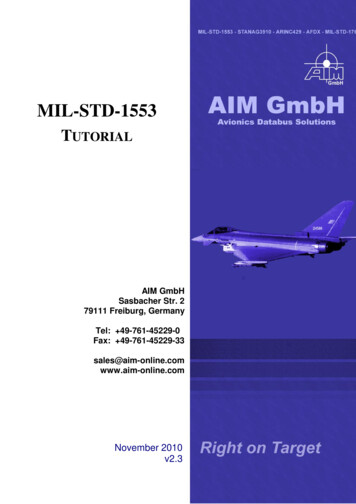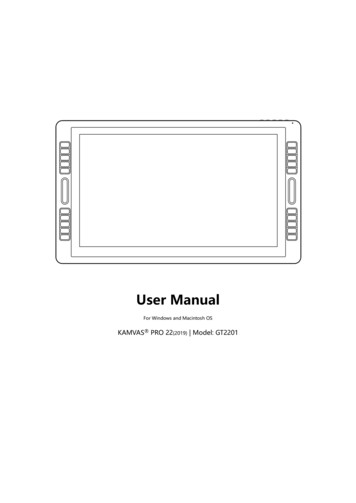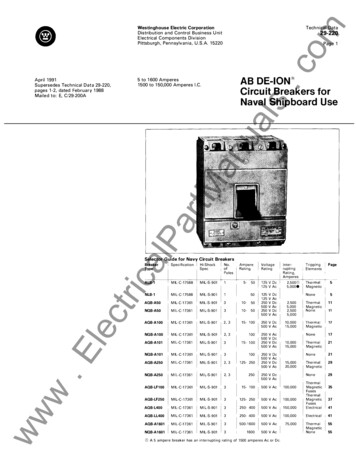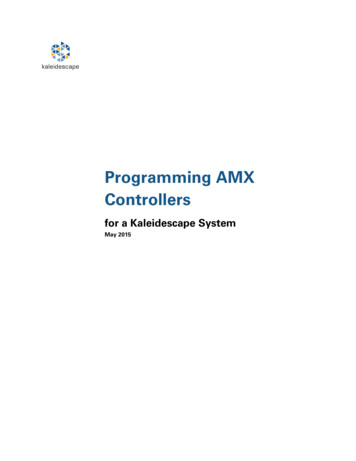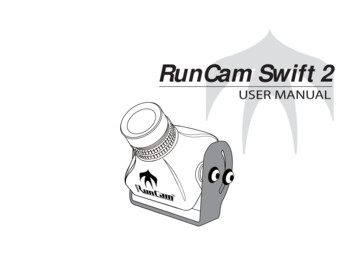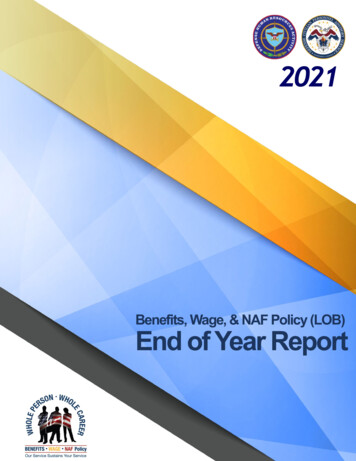
Transcription
2021Benefits, Wage, & NAF Policy (LOB)End of Year Report
Table of ContentsIntroduction . 4Benefits, Wage & NAF Policy (LOB3) Synopsis and Mission . 6Benefits and Work-Life Programs . 7Federal Employees Health Benefits (FEHB) . 9FEHB Enrollment Data Analysis. 11Federal Employees’ Group Life Insurance (FEGLI) .14FEGLI End of Year Summary . 172021 Appropriated Fund Retirement System Status . 18Workforce Age Groups by Retirement System Across DoD . 20Retirement Actions . 22Thrift Savings Plan (TSP) . 242021 TSP Contribution Rates by Age Group . 252021 TSP Contribution Status for DoD Civilians . 26Financial Fitness . 282021 HR Significant Benefits Updates . 29DoD Work-Life Programs . 33DoD Wellness Programs .34Employee Assistance Program (EAP) . 35Workplace Flexibilities .37Telework . 38Telework Participation FY 2021 . 39The 2020 Federal Viewpoint Survey (FEVS) . 40Benefits Credentialing Programs . 42Benefits Training Programs . 44Injury and Unemployment Compensation (ICUC) Branch Mission . 45ICUC Terms . 46COVID-19 Impact . 47PEER Initiative . 48PEER Initiative-ICUC Actions . 49Added Emphasis to PEER Goals and Targets in Advisor Initiated Actions . 50FY 2021 Department PEER Performance . 512
Table of Contents (cont.)FY 2021 Department PEER Performance Goal 6 by Component . 522021 Claim Timeliness all DoD . 532021 Timeliness by Component . 54ICPA Credentialing and Training Programs . 552021 Total CA-1/CA-2 Claims Submitted by Component . 562021 Total CA-7 Claims Submitted by Component . 57Department FECA Costs Over Last 10 Years . 58Number of Claims with Savings . 59Projected Lifetime Cost Avoidance . 60Overall DoD FECA Costs 2021 vs 2020 . 62Cost Performance 2021 vs 2020 . 63Cost Performance 2021 vs 2020 Analysis . 64Unemployment Compensation (UC) Program . 65Wage and Salary Programs . 66Wage and Salary (WAGE) Division 2021 Year in Review . 67WAGE 2021 Accomplishments and Impacts . 68WAGE Survey Industries . 72WAGE Salary Data Collection . 74WAGE Special Pay Programs . 77Nonappropriated Fund (NAF) Personnel Policy . 78NAF Personnel Policy Program . 79NAF Personnel Policy Program Demographics . 80NAF Personnel Policy Program Highlights . 84NAF Health Benefits Program (HBP) . 86NAF Retirement Program . 89NAF Initiatives and Accomplishments . 90NAF COVID-19 Response . 932022 Benefits, Wage & NAF Policy (LOB3) Way Ahead . 943
IntroductionGreetings Friends and Colleagues,On behalf of the Benefits, Wage and NAF Policy Directorate, I would like to thank each of you foranother tremendous year! We transitioned from being reactive to the COVID-19 Pandemic toproactive in developing meaningful processes and procedures that will endure as we redefine ourfuture workplaces and spaces.Speaking of future workplaces, during the past year, much of the Department of Defense (DoD)workforce continued to perform some level of telework or remote work. The Work Life Teamhas been busy updating the DoD Instruction to include new information on both remote work andthe Domestic Employees Teleworking Overseas programs. We believe that this guidance willalign with our goal to become the employer of choice and outline additional workforceflexibilities that support work life balance.The Benefits Branch established the Central Enrollment Clearing House System, Age ofSeparations, and the Retirement Errors working groups, all designed to conduct deliberateexaminations of the barriers that impact our ability to meet the Office of PersonnelManagement’s (OPM) goals and objectives. These working groups include our DoD Componentpartners and have achieved very high levels of synergy and information sharing. Each of theseworking groups continue to review our processes and identify best practices in these areas. TheTeam also established a Dashboard working group to determine the best way to relay theaccomplishments of our DoD Benefits Community using data and metrics. I would like topersonally thank all who are participating in these vital working groups.On January 30, 2021, the Secretary of Defense directed a Zero-Based Review for all DoD AdvisoryCommittees. As a result of this direction, the DoD Wage Committee (DoDWC) meetings wereimmediately halted until completion of the review. Since DoD is the lead agency for all federalprevailing rate wage surveys and pay schedules that cover approximately 240,000 appropriatedfund and nonappropriated fund (NAF) employees, this review prevented our ability to publishpay tables. The Wage Team worked very hard to successfully meet all of the many requirementsof the Zero-Based Review and due to their efforts, the DoDWC resumed both their meetings andthe release of pay schedules. This was a massive undertaking and I would like to thank everyonewho made this possible.In case you have not heard, congratulations are also in order for the NAF Policy Team. Theyobtained the Deputy Secretary of Defense’s approval to implement a fully insured groupMedicare Advantage with Prescription Drug Plan as an option within the current NAF HealthBenefits Program. Their efforts will potentially save the Department millions of dollars and be agreat benefit for NAF retirees! Thanks to all who worked to make this happen.The Training and Credentialing Team has continued to host a variety of new training events. Inaddition to the numerous training sessions already scheduled, they implemented monthly studygroup sessions to help individuals prepare for their credentialing exams. The Team also updatedmany of the training materials and manuals making it easier for class participants to understandand study the materials. We could not have accomplished this major effort without yourfeedback and support.4
Introduction (cont.)The Unemployment Compensation Team has worked with State unemployment offices toimplement the use of the DoD Secure Access File Exchange tool. This allows the Team toprovide faster responses to requests for information from the States, as well as ensuring theprotection of former employees’ personal identifiable information. It also allows Components tomanage costs for the unemployment compensation program.The Injury Compensation Team worked with the Training and Credentialing Team to launch andpilot credentialing tests for both Levels l and II of the Injury Compensation ProgramAdministrator (ICPA) credentialing training. The Team is also in the final stages of implementingtheir Program Review initiative. This will nicely complement and integrate with the ICPA Levellll training that is under development for Component Injury Compensation Program managers.As for this year, we will be hosting a 2022 Benefits Symposium. This will be a weeklong eventdesigned to provide information, training, and assistance to Component Benefits Advisors andOfficers. The Symposium will include Keynote Speakers from OPM, Department of Labor,Department of Health and Human Services, and the Thrift Savings Plan. We will provide moreinformation as the time nears and we hope you are able to participate.Finally, as always, we thank you for another year’s journey and eagerly anticipate all that wewill accomplish together in the coming year.Taiwanna R. Smith, DoD EBADirector, Benefits, Wage & NAF PolicyLine of Business (LOB3)5
Benefits, Wage & NAF Policy (LOB3) Synopsis and MissionIntroductionWe are a diverse, experienced team with the functional expertise designated to oversee avariety of benefits and work-life programs, provide training, set pay for all Federal WageSystem (FWS) employees, and develop and administer Department of Defense (DoD)-wideappropriated and nonappropriated fund (NAF) policy covering a worldwide civilian workforce.BenefitsWe are DoD Employee Benefits Credentialed HR Specialists who oversee an expansive portfoliothat includes benefits such as health, life and long term care insurance, retirement, workers’compensation, unemployment compensation, and work-life programs. The Team works closelywith the Office of Personnel Management (OPM) and other Federal Agencies to ensure theDepartment complies with all laws and regulations. Additionally, the Benefits team providesadvisory services and training, and leads several communities of practice working groups. TheBenefits Team also developed and administers a comprehensive Benefits Credentialing Programwhich focuses on functional competencies and more importantly, accurate interpretations andapplications of Federal laws, regulations and policies.WageWe are an operational team hyper-focused on compensation for appropriated andnonappropriated fund personnel in accordance with section 5343 of title 5, United States Codeand part 532 of title 5, Code of Federal Regulations. We conduct local prevailing rate wagesurveys to set the pay for all Federal blue-collar employees as well as DoD educators, civilianmariners, power generation employees, health care professionals, foreign national payprograms, and special rates programs. Additionally, we provide technical support to OPM,Federal Prevailing Rate Advisory Committee (FPRAC), Foreign National Programs, DoDComponents, DCPAS Leadership, and civilian Federal agencies.NAF Personnel PolicyWe are the only DoD-level office that develops and administers DoD-wide NAF HR personnelpolicies and programs. We provide advisory services to officials within and outside of DoD. Weadminister the DoD NAF portability of benefits policy for employee moves between NAF and APFpositions or between APF and NAF positions. Additionally, we administer the NAF HealthBenefits Program, which includes a self-insured medical benefits plan, a self-insured dentalplan, and a stand-alone dental plan managed by a third party administrator - for more than80,000 employees, retirees and dependents. The Secretary of Defense has broad administrativeauthority over most NAF personnel policy, in contrast with the APF benefits programs which areadministered by OPM.NOTE: “DoD Totals” appropriated fund population numbers throughout this report reflect dataas of the date the data was pulled from the Corporate Management Information System (CMIS).Nonappropriated fund population numbers reflect data as of the date the data was pulled fromthe Defense Manpower Data Center’s Reporting System (DMDCRS).6
Benefits andWork-Life Programs7
Benefits and Work-Life ProgramsThe goal of the Benefits and Work-Life Programs Division (BWLPD) is to educate both DoD HumanResources Practitioners and the DoD workforce on the vast assortment of complex benefits andwork-life programs that are available. These benefits and work-life programs can assistemployees with important decisions that will ultimately affect pre- and post-retirement worklife balance. BWLPD continues to spearhead a comprehensive effort to educate, provideguidance, and encourage the use of benefits and workplace flexibilities and programs that willempower the DoD workforce to effectively accomplish the mission while meeting family needsand responsibilities at home.BWLPD is comprised of a team of credentialed benefits advisors who are prepared to provideguidance and strategic solutions to support the benefits programs outlined below (not allinclusive): Federal Employees Health Benefits (FEHB) Federal Employees’ Group Life Insurance (FEGLI) Federal Employees Dental and Vision Insurance Program (FEDVIP) Federal Flexible Spending Account Program (FSAFEDS) Federal Long-term Care Insurance (FLTCIP) Appropriated Fund Retirement Programs, Systems, and Actions Phased Retirement Reemployed Annuitants Age of Separation Thrift Savings Plan (TSP) Financial Fitness Telework Work-Life Wellness DoD HR Employee Benefits Training and Credentialing Injury Compensation Program Unemployment Compensation8
Federal Employees Health Benefits (FEHB) ProgramThe Federal Employees Health Benefits (FEHB) Program provides health care benefits for 8.2million Federal civilian employees, annuitants and their families, and certain Tribal employeesand their families. It is the most diverse employer sponsored health benefits program in thecountry, offering the widest selection of health plan choices.In 2021, there were 276 plan options, although the actual number of options available to eachemployee is dependent upon their geographical location. Employees are encouraged to use theOPM Plan Comparison Tool at e/planinformation/compare-plans/ for the list of plans available by location. As of 2016, there arethree enrollment types available with each plan option: Self Only, Self Plus One, and Self andFamily.As of December 2021, there are 778,377 DoD employees eligible for FEHB. Sixty-three percentof the eligible population are enrolled. Of the enrolled population, 36 percent are enrolled inSelf Only; 15 percent in Self Plus One; and 49 percent in Self and Family.OPM administers the FEHB Program government-wide and sets the premium rates each year.While total premiums may differ from year to year, the government contribution is always thelesser of: (1) 72 percent of the program-wide weighted average of premiums in effect eachyear as determined by OPM, or (2) 75 percent of the total premium for the particular plan anenrollee selects.1Participation and Employer Contribution Rates – FEHB vs Nonfederal plansFor most employees, the government contribution to plan premiums is competitive. The charton the next page shows a comparison of employer contribution, access, participation, and take-up rates in the private industry, and state and local government versus the FederalGovernment.2Ninety-nine percent of our employees have access to Federal employer sponsored FEHB,compared to private sector, and state and local government health benefits, where employeeswith access to employer sponsored health benefits is 70 percent and 89 percent respectively.Although more DoD employees have access to employer sponsored health benefits, we have alower take-up rate. The percentage of eligible DoD employees who enrolled in FEHB (63percent) is lower than the percentage of eligible private sector, and state and localgovernment employees who enrolled in their employer sponsored plan(s), 67 percent and 76percent respectively.3 This difference could be attributable to access to non-FEHB healthbenefits, such as TRICARE or coverage under a spouse’s private insurance.1U.S. Office of Personnel Management, Healthcare & Insurance, Cost of Insurance, /reference-materials/reference/cost-of-insurance/, (accessed December 2021).2U.S. Bureau of Labor Statistics, News Release USDL-21-1690, Employee Benefits in the United States - March 2021, https://www.bls.gov/news.release/pdf/ebs2.pdf, (accessed January 2022).3Take-up rate—calculated from the unrounded percentage of workers with access to a plan and who participate in the plan.NOTE: The Private Industry and State & Local Government data is from the BLS report. DoD data is from CMIS and theFEHB contribution split published by OPM.9
FEHB (cont.)Private IndustryState & LocalGovernmentDoD CivilianEmployeesAccess to Medical Benefits70%89%99%Participation47%67%63%Take-up Rate67%76%63%Share of Premiums Paid by Employer78%86%72%Share of Premiums Paid by Employee22%14%28%* Premium share is based on single (Self Only) coverage.Major Events and Program ChangesFEHB’s Response to COVID-19:The Coronavirus (COVID-19) Pandemic continues to affect the healthcare system globally withemerging variants. Cost-sharing and prior authorization requirements for COVID-19 diagnosticand antibody testing remain waived. In addition, all FEHB Carriers cover vaccinations andboosters authorized or approved by the U.S. Food and Drug Administration at no cost to theemployee.Premium Rates:OPM reported a 3.6 percent average premium rate increase for non-Postal employees andannuitants in 2021. This is down .4 percent compared to 2020. It is also lower than the 4-10percent range projected for or reported by other large private and public sector employers.Significant Plan Changes:Each year OPM publishes a Benefits Administration Letter (BAL) announcing significant planchanges in effect the following plan year. BAL 20-403, dated November 2, 2020, announcedthe changes for 2021. Among these changes are new plan options, plans that terminatedoptions or enrollment codes, and plans that left the FEHB Program 4. Employees enrolled in aterminating plan or enrollment code, and who failed to elect a new plan, wereadministratively enrolled in the lowest-cost nationwide plan option for 2021 – GEHA IndemnityBenefit Plan Elevate.Enrollees in plans leaving the FEHB Program, or terminating enrollment codes effective planyear 2022, must make a positive election during the 2021 open season. Failure to do so willresult in administrative enrollment in GEHA Indemnity Benefit Plan Elevate, which is also thelowest-cost nationwide plan option for 2022. As of December 2021, there are 58 DoD civilianemployees enrolled in a plan that is either leaving the FEHB Program or reducing service areasand terminating enrollment codes. This represents .01 percent of total DoD enrollments.4U.S. Office of Personnel Management, Attachment 2: FEHB Significant Plan Changes, 3a2.pdf, (accessed December 2021).10
FEHB Enrollment Data AnalysisThe following data represents a point-in-time snapshot of DoD FEHB enrollments5 as ofDecember 31, 2021.5Source: Corporate Management Information System (CMIS)11
FEHB Enrollment Data Analysis (cont.)As reflected below, there are only nominal changes in Total Eligible vs Total Enrolled year overyear.2017% elf and Family is the most elected enrollment type, accounting for 49 percent of enrollments.Self Only elections make up 36 percent of total enrollments and Self Plus One is 15 percent.12
FEHB Enrollment Data Analysis (cont.)2021 Top Five Plans Agency-wideThe following chart reflects the top five plans by total enrolled.Blue Cross Blue Shield Service Benefit Plan203,196Blue Cross And Blue Shield111,403GEHA Benefit Plan36,210Blue Cross Blue Shield Service Benefit Plan FEP Blue Focus17,995Kaiser Permanente - Southern California11,727Total380,531Percent Of Total Enrollments78%13
Federal Employees’ Group Life Insurance (FEGLI)Federal Employees’ Group Life Insurance (FEGLI) is the largest group life insurance program inthe world with over 4 million enrollees. OPM administers the program, while Metropolitan LifeInsurance Company (MetLife) provides the life insurance. The program offers term life insuranceto eligible Federal Government employees. Elections to enroll are limited to the first 60 days ofemployment. Otherwise, employees have other options to enroll such as: Qualifying Life Events(QLE), a Request for Insurance (SF-2822) submitted a year after the effective date of a signedwaiver, or during a rare FEGLI Open Season.FEGLI consists of Basic and Optional tiers of insurance that allow employees to acquire additional insurance for themselves and their dependents. The Basic insurance cost is shared by theFederal Government; employees pay two-thirds of the premium total cost. Age does not affectthe cost of the Basic insurance. However, optional and dependent insurance premiums arebased on the employee’s current age. Employee age category increases occur every five years,raising FEGLI premiums. Employees can reduce or cancel FEGLI coverage anytime.Employees must be enrolled five years prior to retirement in order to continue their electedcoverage into retirement. They can elect to have full coverage or various reductions in Basic andOptional coverage effective in retirement.Over 714,000 DoD employees are enrolled in FEGLI. The data outlined on the next few pagesprovide a snapshot of the Department’s overall enrollment status as of December 2021. Thevarious choices for optional insurance available to employees are combined into one column.The total number of employees enrolled and/or waiving life insurance coverage are provided for2020–2021 comparison purposes.OPM issued BAL 21-204: Announcing New FEGLI Premiums. Starting October 1, 2021, premiumrates increased for employee Basic Insurance, annuitants with Basic Insurance at 50 percent Reduction and No Reduction, and for Options B and C older age bands. Most premium rates decreased for Option A, B, and C. Agencies can review BAL 21-203: FEGLI Forms Processing DuringDisruption of Agency Operations to assist in processing FEGLI actions during the current disruption to normal agency operations.14
FEGLI (cont.)2020 FEGLI DATAEmployees not EligibleTotalEmployeesCoverage not Offered12 Months in LWOPEmployeesEligible to EnrollAir 853DoD Agencies114,2555,264100108,891National 5Total796,19815,5774,468776,153*Component* The total number of employees eligible to enroll in FEGLI is represented by subtracting employees ineligible by law or regulation (listed as “Coverage not Offered”) and the number of employees excluded by being in a non-pay status for 12 months. The remaining result is 776,153employees. Data is reflected as of December 31, 2020.2020 FEGLI DATAComponentEmployeesTotal ofEmployeesEligible to EnrollAir ForceEnrolledBasic 114,97999,92394.3%12,9495.7%DoD Agencies108, 89156,04145,51393.3%7,3336.7%National 10593%54,0297%Note: In 2020, 93 percent of the eligible DoD population were enrolled in the FEGLI program, with seven percent waiving coverage. Data is reflected as of December 31, 2020.15
FEGLI (cont.)2021 FEGLI DATAEmployees not EligibleComponentTotalEmployeesEmployees Eligibleto EnrollCoverage not Offered12 Months in LWOPAir 324DoD Agencies114,8384,384156110,298National 9Total784,55212,5305,476766,546** The total number of employees eligible to enroll in FEGLI is represented by subtracting employees ineligible by law or regulation (listed as “Coverage not Offered”) and the number of employees excluded by being in a non-pay status for 12 months. The remaining result is 766,546employees eligible to enroll in FEGLI coverage. Data is reflected as of December 31, 2021.2021 FEGLI DATAComponentTotal number ofEmployees Eligibleto EnrollOptionalInsurancePercent ofEligibleEnrolledEnrolledBasic OnlyWaivedPercentWaivedAir 114,42094,42494.4%12,4775.6%DoD Agencies110,29857,88145,21993.5%7,1986.5%National .1%52,5066.8%Note: In 2021, 93.1 percent of the eligible DoD population were enrolled in the FEGLI program, with 6.8 percent waiving coverage. Data is reflected as of December 31, 2021.16
FEGLI End of Year SummaryEmployeesEligible toEnrollEnrolledin BasicOnlyEmployeesenrolled inOptionalInsuranceWaivedPercentWaivedTotal as of12/31/2020776,153423,013299,10593%54,0297%Total as rolledThe comparison of 2020 to 2021 FEGLI data shows that the percent of employees enrolled in Optional Insurance decreased by 12.2 percent and the number of employees waiving coverage decreased by 1,523.Note: T he review and analysis presented in this report captures data as of December 2021.17
2021 Appropriated Fund Retirement System StatusThis section discusses the number of DoD employees6 who are covered under the major Title 5 retirement systems (that is, CSRS and FERS), those who are covered under other retirement systems(FSPS and FSRDS), and finally, those employees who lack retirement coverage entirely (FICA,“none,” “other,” and “(blank)”) as of the end of 2020.The Civil Service Retirement System (CSRS) is a “closed” retirement system (that is, it is not opento new employees hired on or after January 1, 1984). Even with retirement system coverage errors, the number of CSRS employees is steadily decreasing; as of the end of 2021, the number ofCSRS employees remaining in DoD totaled 7,600 (an approximate 35 percent decrease from lastyear’s employee census), which is consistent with federal workforce retirement predictions (theyoungest CSRS employees can legally be, are 53 years old, while the oldest CSRS employee is agedaround 95 years old). CSRS-Offset is an offshoot of CSRS; while CSRS employees do not pay intoSocial Security (i.e. FICA taxes), CSRS-Offset employees pay both into the CSRS retirement fund,and also into Social Security. Like CSRS, CSRS-Offset is a “closed” system (it is not open to newemployees hired on or after January 1, 1987, who have less than five years of CSRS service). Evenwith retirement system coverage errors, the number of CSRS-Offset employees is steadily decreasing; as of the end of 2021, the number of CSRS-Offset employees totaled 2,385 (an approximately26.7 percent decrease from 2020), which is consistent with federal workforce retirement predictions (the youngest CSRS-Offset employee can legally be, are 58 years old, while the oldest CSRSOffset employee is 88 years old).The Federal Employees Retirement System (FERS), like CSRS and CSRS-Offset, is a “closed” retirement system; it is not open to new employees hired on or after January 1, 2013. Even with retirement system contribution errors (that is, where an employee should properly be placed in aFERS offshoot, rather than FERS), the number of FERS employees remains steadily consistent. Asof the end of fourth quarter 2021, the number of FERS employees within DoD decreased by eightpercent to 403,907 (the youngest a FERS employee can legally be, is 24 year
Enrollees in plans leaving the FEHB Program, or terminating enrollment codes effective plan year 2022, must make a positive election during the 2021 open season. Failure to do so will . 2016 and 2017 are statistically significant outliers and do not reflect any lessening of physical and mental safety standards in the DoD's workplace.10

